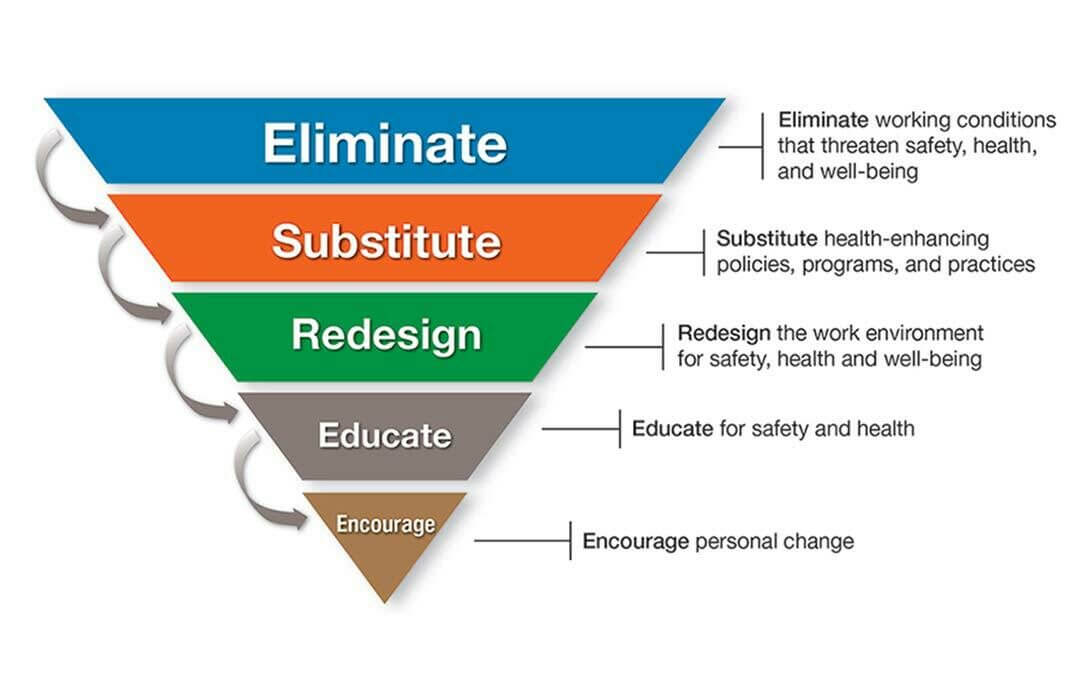What is Total Worker Health (TWH)?
Total Worker Health (TWH) is a holistic view of employee health. TWH, according to the National Institute for Occupational Safety and Health (NIOSH), is a fundamental method of protecting workers. Controls are designed to eliminate or reduce recognized hazards, risks, and stressors in the workplace and look to address how work programs and job conditions impact overall worker health and safety.
According to NIOSH, “the TWH approach provides a pathway to improve worker creativity, innovation, and productivity by creating work and work environments that are safe, health-enhancing, meaningful and fulfilling.” Some job-related stressors may include wages, poor interactions with management, or heavy shift schedules, which all can not only impact the worker, but also their families and the greater community. But it also goes beyond the work they do; even non-occupational exposures to hazardous environments or triggers can influence the likelihood of worker illness and injury.
The TWH approach can eliminate major hazards and stressors from the work environment that affect a worker directly and mitigate these factors in order to prevent accidents or injury from occurring.
The CDC notes that….
- Nearly 50% of Americans have at least one chronic health condition.
- Construction workers suffer a double dose of on-the-job health problems. According to one NIH study, “Substantial mental distress was associated with both injury and self-reported pain” for a high percentage of construction workers.
- According to research, 10% to 20% of all causes of deaths related to cardiovascular disease among working-age populations can be attributed to work.
- One in four American workers are past age 55 as of 2020, according to the Bureau of Labor Statistics.
The foregoing are factors that can impact the workplace, as well as worker safety and health at all levels of the organization. Leaders who are committed to worker safety and health can team up with managers and workers as prime movers to promote health and safety best practices in the workplace.
Integrating everything: Have you made your WISH?
Designed and developed at Harvard University, the WISH Assessment can give employers a comprehensive measurement of your workplace environment and how it affects worker safety and well-being. This should be required reading for all leaders and managers.
The Total Worker Health Hierarchy of Controls
NIOSH has adapted the traditional hierarchy of controls based on Total Worker Health (see above). The following controls and their associated strategies are ranked of how effective they can be and the amount of protection they provide in the workplace:
1. Eliminate working hazards and conditions that cause worker illness or injury “or otherwise negatively impact well-being.” Those hazards can be both occupational and non-occupational and include everything from improving operations to reducing personal stress.
2. Replace those unsatisfactory conditions or ways of doing business with “safe, health-enhancing policies, programs, and management practices.” The goal is to improve the workplace culture of health and safety.
3. Redesign the job as needed. Remove blocks and impediments to establishing safer and healthier working conditions. Redesign could include measures such as providing paid sick leave or simply promoting healthful work and living habits.
4. Educate employees in the best safety and health practices. The goal is to increase the individual knowledge of frontline workers. Knowledge is power, and employees need to learn by doing the job correctly to have the power to promote safety and report hazards. Businesses can start by integrating technology that supports ongoing training and engagement.
5. Encourage a culture of safety within the business with personal change. This requires a leadership focus that begins with a compelling vision, leadership development and superimposing health and safety words and deeds into the organization.
Making the Connection Between Total Worker Health and Workplace Process
Total Worker Health is an ideal state and is achievable through enlightened leadership, management supervision, and employee commitment. Harnessing this methods potential on the job is where theory meets practice.
Anvl’s solution works to identify hazards with our smart digital workflows and mitigate risks at the earliest point possible. Also with data collection, management can look at leading indicators over time and identify areas for safety improvement. Anvl’s solution transforms your current paper processes into a digital solution that is more actionable and in-the-moment to ensure the safest working conditions for your employees.
Rethink the way you think about worker safety. Making investments in safety improvements also drives enhanced safety behaviors on the behalf of the employee, and employees feel more satisfied and engaged in their work environment. See how Anvl can be your tool in promoting and encouraging the aforementioned safety culture in your business.


